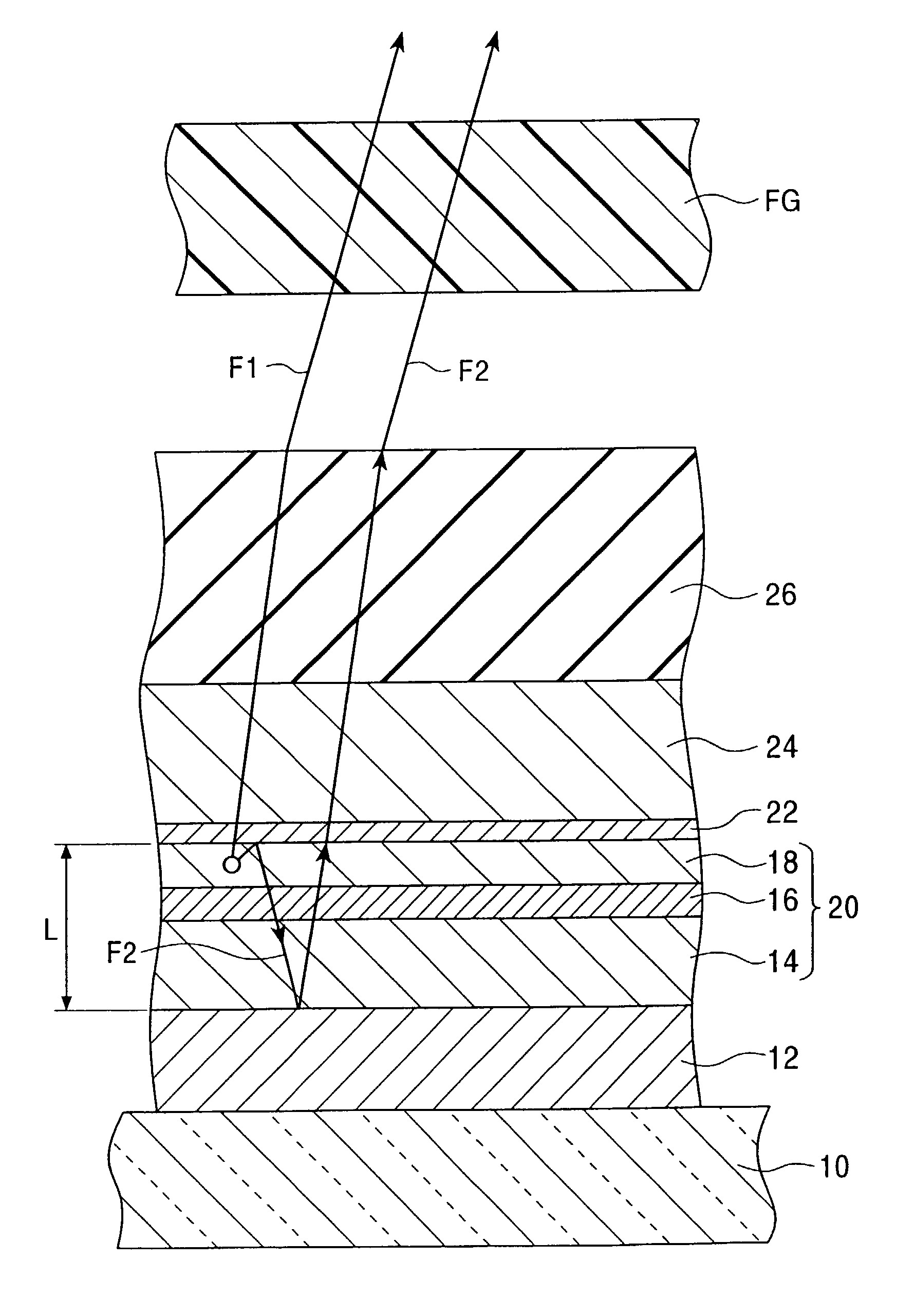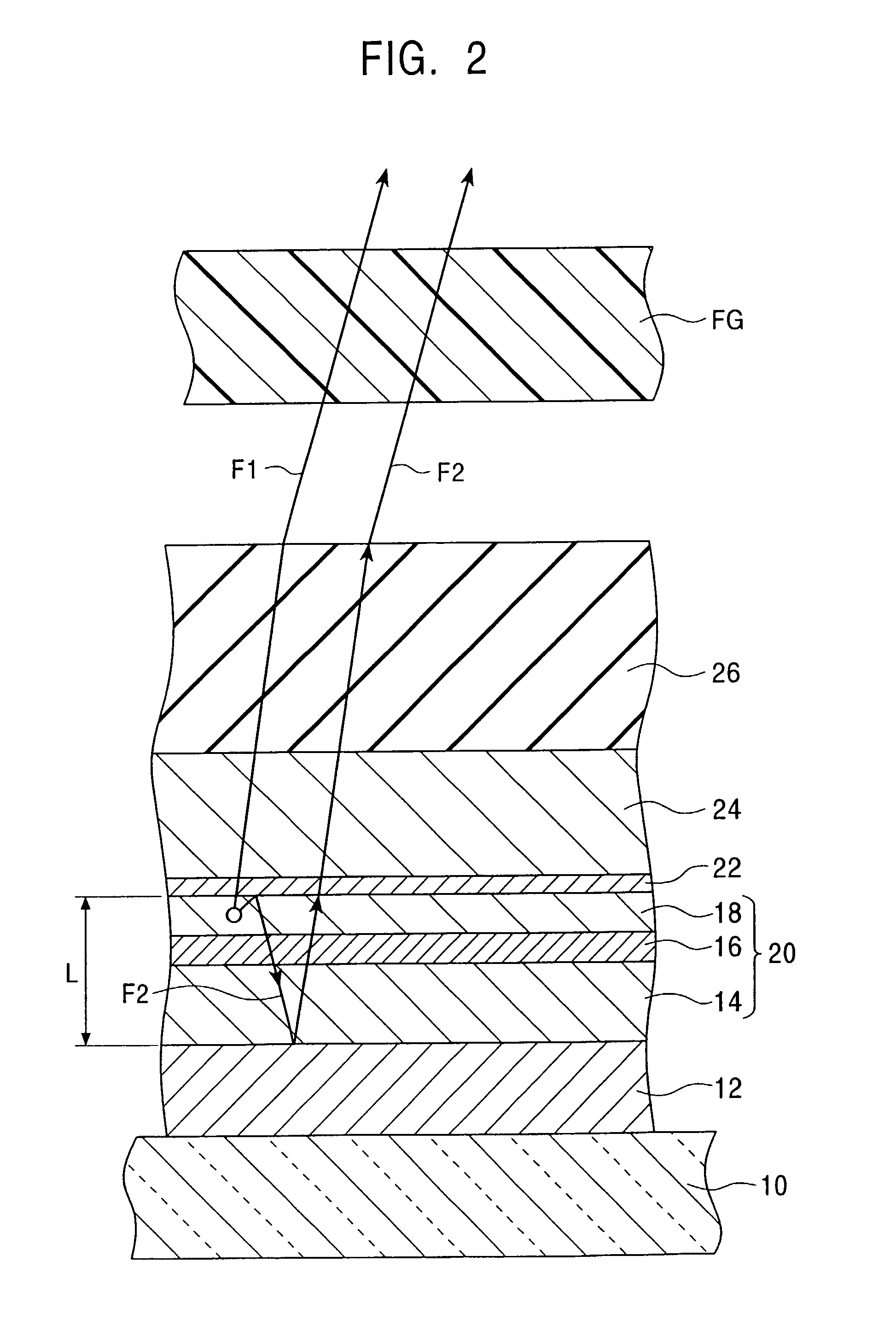Display unit
a display unit and display technology, applied in the field of display units, can solve the problems of unit reducing the transmittance of light from the organic el layer, the ineffective removal of external light, and the inability of the color filter to suppress the reflection of the r, g and b light components of the external light, so as to achieve the effect of significant improvement of contras
- Summary
- Abstract
- Description
- Claims
- Application Information
AI Technical Summary
Benefits of technology
Problems solved by technology
Method used
Image
Examples
first embodiment
[0030]A first embodiment of the present invention will now be described in detail. Referring to FIG. 1A, R, G, and B light-emitting pixels are arranged in a predetermined sequence in a two-dimensional array. In this drawing, R, G, and B pixels are repeated in the X direction, whereas pixels of the same color are repeated in the Y direction. A combination of consecutive R, G, and B pixels in the X direction constitutes an image pixel P. In this embodiment, the R pixels and the B pixels each have a G-light-absorbing filter FG at the image display side (light output side or external-light incident side) thereof. The G pixels have no filters.
[0031]FIG. 2 shows a composite structure of an R or B light-emitting pixel. A reflective layer 12, which is composed of Pt, Au, Cr, or W and which also functions as an anode, is deposited on a glass substrate 10. A buffer layer 14 composed of m-MTDATA, 2-TNATA, or the like is deposited on the reflective layer 12, and a hole transport layer 16 compos...
second embodiment
[0056]Referring to FIG. 10, a second embodiment of the present invention will now be described. Components having the same functions as in the first embodiment are referred to with the same reference numerals. In this embodiment, light is output from the substrate side, unlike the first embodiment. A translucent reflective layer 50, a buffer layer 14, a hole transport layer 16, a luminescent layer 18, and a reflective layer 52 composed of aluminum or the like are deposited in that order on a substrate 10. Thus, the translucent reflective layer 50 is arranged at the substrate side. A G-light-absorbing filter FG is arranged on the substrate 10.
[0057]A fraction F11 of light emitted from the luminescent layer 18 of the organic EL layer 20 passes through the translucent reflective layer 50, transparent conductive layer 24, and the glass substrate 10 and is incident on the G-light-absorbing filter FG. Another fraction F11 of the light emitted from the luminescent layer 18 is reflected by ...
third embodiment
[0058]Referring to FIGS. 11A to 11D, a third embodiment of the present invention will now be described. In FIG. 11A, a G-light-absorbing filter FG is provided on a passivation film 26. In FIG. 11B, a G-light-absorbing filter FG is provided between a transparent conductive layer 24 and a passivation film 26. The only difference between these modifications and the first embodiment is the position of the G-light-absorbing filter FG. In the first embodiment, the luminescent layer 18 also functions as the electron transport layer. In FIG. 11C, both a luminescent layer 18A and an electron transport layer 18B are provided.
[0059]In the above embodiments, a reflective layer and a translucent reflective layer constitute an optical resonator structure. In FIG. 11D, no translucent reflective layer is provided. The light emitted from the organic EL layer 20 is directly incident on a G-light-absorbing filter FG, as shown by arrow F1, or is reflected by the reflective layer 12 and then is incident...
PUM
 Login to View More
Login to View More Abstract
Description
Claims
Application Information
 Login to View More
Login to View More - R&D
- Intellectual Property
- Life Sciences
- Materials
- Tech Scout
- Unparalleled Data Quality
- Higher Quality Content
- 60% Fewer Hallucinations
Browse by: Latest US Patents, China's latest patents, Technical Efficacy Thesaurus, Application Domain, Technology Topic, Popular Technical Reports.
© 2025 PatSnap. All rights reserved.Legal|Privacy policy|Modern Slavery Act Transparency Statement|Sitemap|About US| Contact US: help@patsnap.com



